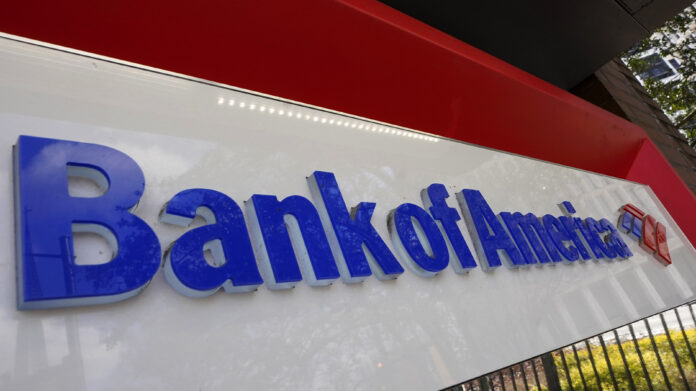
NEW YORK (AP) — Bank of America’s profits doubled in the first quarter, the bank said Thursday, as the improving economy allowed it to release billions from its loan-loss reserves that it originally set aside in the early days of the pandemic.
Bank of America is the latest of the big banks to say it has released billions from its reserves, following JPMorgan Chase and Wells Fargo, which announced results Wednesday. The release of reserves helped both of those banks’ profits soar compared to the year-ago first quarter.
The Charlotte-based banking giant earned $8.1 billion in the quarter, equal to 86 cents per diluted share, compared to a profit of $4.01 billion, or 40 cents per diluted share, in the same period a year earlier. Analysts were looking for BofA to earn 66 cents a share.
Shares of Bank of America rose about 1% in premarket trading.
The bank had a net one-time gain of $1.86 billion for releasing loans from its loan-loss reserves.
Like JPMorgan Chase and Goldman Sachs, which also reported its results on Wednesday, BofA had a strong quarter in its investment banking division. Total profits in the division rose to $2.05 billion from $1.71 billion in the same period a year earlier. The bank saw revenue gains on its trading desks, a reflection of the healthy volatility the markets had last quarter.
Total revenue across all divisions declined, however, 10.2% to $24.1 billion, driven by a $4.7 billion loss in interest income. The $11.4 billion in interest income was the result of low interest rates, which negatively impacted BofA and hurt other banks as well. This was partially offset by an 18.8% bump in noninterest income, which reached $12.6 billion.
The bank’s net interest income fell from $12.13 billion last quarter to $10.2 billion in this quarter. BofA’s balance sheet tends to skew toward financial products with a shorter duration, so more of the bank’s balance sheet changed to lower interest rate products than its competition.
Also a reflection of challenges in interest rates was the net interest margin, the difference between interest income generated and the amount paid out to lenders. The first quarter’s 1.68% net interest margin was 65 basis points below the same time frame a year ago.
Non-interest expenses also increased by 15.1% to $15.5 billion, including $9.7 million in compensation and benefits.
Total assets stood at $2.9 trillion, an increase of 15% over the same period a year ago. This included $278.1 billion in interest-bearing deposits with the Federal Reserve and other banks, more than twice the $130.3 billion from quarter one of 2020.
Total loans and leases fell 8.4% year over year to $907.7 billion, reflecting declines in commercial loans and lower credit card balances, the bank stated.
Total deposits of $1.9 trillion had increased by 19% year over year, driven by increases in its non-interest bearing deposits in both U.S. and non-U.S. offices.
In a statement, Chief Financial Officer Paul Donofrio named the company’s “responsible” operations along with government stimulus and strong customer liquidity as reasons for its improved asset quality.
“We believe our strong balance sheet, the diversity of our business lines, and the careful way we have managed risk for many years should enable us to continue to return to our shareholders the excess capital that is not needed to support economic growth, deliver for customers and communities, invest in our future and sustain strength and stability through future economic cycles,” Donofrio stated.
Ken Sweet is an AP Business writer. PBN contributed to this report.












